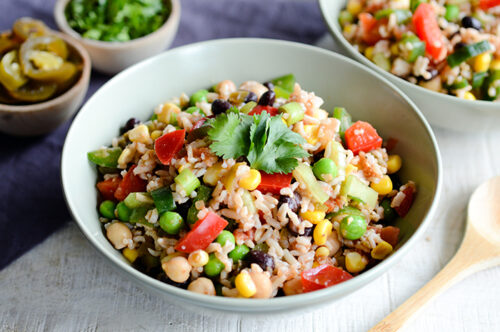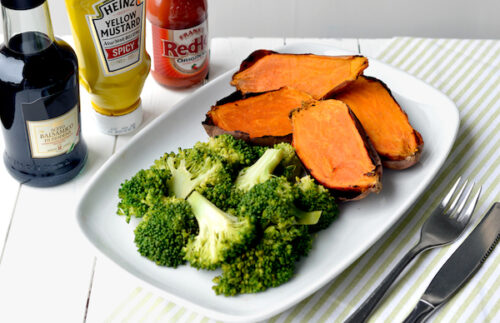How Foul Is Fowl?

This article originally appeared in the March 2006 McDougall Newsletter and has been updated in January 2023.
By John McDougall, MD
Chicken and turkey are called “white meats,” as in “clean white meat,” and are considered to be health foods. The truth is fowl are filthy with a multitude of disease-causing ingredients. The horrible threat of a bird flu pandemic may cause health-conscious people to examine more closely the facts behind this traditional meal centerpiece—and we may see something like how mad cow disease, with all the emotions it aroused, caused people to rethink beef. Even though to date only a handful of people have died from either of these animal-borne infections, the fear of these two diseases could save millions of lives as people refrain from eating the more ordinary, but very lethal, parts of an animal’s tissues.
The tissues of all fowl consist primarily of artery-clogging fat and cholesterol, and bone-destroying protein and acid. They are completely devoid of energy-giving carbohydrates and bowel-moving fiber. Like “sauce on the goose” they are contaminated with deadly microbes and cancer-causing chemicals. Have I stimulated your appetite?—to learn more?
Amazing What People Eat
A fowl is a bird of any kind, although some types of birds use the word specifically in their names; for example, Guineafowl and Peafowl. Chickens and turkeys are the most popular birds found on people’s dinner plates. In the US, over 35 billion tons of chicken are consumed annually, with a per capita intake of 87 pounds a year. About 18 pounds per person of turkey are consumed each year. The scare of bird flu has already begun to take a bite, with chicken consumption down almost 90% in some European markets and India, and chicken prices are plummeting.
Besides chicken and turkey, Westerners also eat ducks, guinea hens, quail, pheasants, geese, and ostriches. In other cultures, people are known to eat anything they can catch, including parrots, swans, emus, rheas, and even penguins.
Parts commonly eaten are the muscles, skin, and fat of the fowl. People also eat the heart, liver, and gizzard – collectively known as the giblets. A prized delicacy, Foie gras (which is French for “fat liver”), is made from the enlarged livers of male ducks and geese. The Chinese even eat the chicken’s feet—and chicken feet represented 43% of US poultry sales to China. (Recipe: Wash chicken feet. Chop off toenails. The feet are first fried, then marinated, and finally steamed.)
Fowl Is Rich Feast Food—at Best/Worst
Birds as food have traditionally been considered a delicacy—a fare reserved for holidays, like Thanksgiving, or as a treat for Sunday’s dinner. Today’s practice of “making every day a feast day” has caused the worldwide epidemic of malnutrition from overnutrition—now the most important killer of all. Too many calories, and too much fat and protein, mean disease—like obesity, heart attacks, cancer, diabetes, arthritis, osteoporosis, and much more suffering.
The fat and protein content of a bird depends in large part upon its diet and activity level. (Heard that one before?) Wild birds are generally much leaner, and therefore, lower in fat and higher in protein. Meat breeds are chickens developed for their quick growth—heavy with fat and muscle—they are mass-produced specifically to be eaten. The fat and cholesterol in fowl permeate its flesh; they cannot be cut away.
Birds and bird parts with a lower fat content are by nature higher in protein. Excess protein is as damaging to health as is excess fat—causing kidney stones, loss of kidney function, osteoporosis, and cancers (lymphomas). You will hardly find a “micro-spec” of dietary fiber or carbohydrate in a bird carcass.
Comparison of Food Values1*
| Bird (roasted) | Fat
% Calories |
Protein
% Calories |
Cholesterol
mg/100 Calories |
|
| Chicken | 51 | 49 | 37 | |
| Chicken (White Meat) | 24 | 76 | 49 | |
| Duck | 76 | 24 | 25 | |
| Goose | 65 | 35 | 30 | |
| Turkey | 45 | 55 | 40 | |
| For Comparison: | ||||
| Beef | 50 | 50 | 34 | |
| Salmon | 54 | 46 | 31 | |
| Potato | 01 | 09 | 0 | |
| Pinto Bean | 04 | 24 | 0 |
* Note how similar the values of various meats—“a muscle is a muscle…”
Bugs in Your Birds
Bacteria, viruses, parasites, and fungi found in fowl cause illness and death in humans. The most common pathogens found in commercially processed bird flesh are from their own bowel bacteria and these organisms are Campylobacter, E. coli and salmonella. During the manufacturing processes used to bring chickens to market, “fecal soup” is created as thousands of dirty chickens are bathed together. In one study of retail markets in the Washington, D.C. area from June 1999 to July 2000, 70.7% of chicken samples were found to be contaminated with Campylobacter, and 91.1% of the stores visited sold Campylobacter-contaminated chickens. E. coli were found in 38.7% of chicken samples.2 Approximately 14% of the turkey samples yielded Campylobacter and 11.9% were positive for E. coli. Salmonella was found in 25% of both of these white meats.
Infections with any of these three bacteria can cause symptoms very similar to the flu, like nausea, vomiting, abdominal cramps, diarrhea, fever, chills, weakness and exhaustion; and can be deadly for children, the elderly, and people with suppressed immune systems. Infections are caused by close contact with the carcasses of birds. Eating the flesh of birds is as close as you can get to their germ-infested tissues. Although cooking destroys most of these infectious agents, people eat, often unknowingly, partially cooked and raw meats.
Is Bird Flu a Real Threat?
During the 1997 epidemic of bird flu in Hong Kong eighteen people were infected by contact with birds, resulting in six fatalities. Since then the virus has been spreading from Southern China to other parts of the world by migratory birds and, less commonly, by bird trafficking. This year (2006) bird flu is expected to reach the US. From December 2003 through March 6, 2006, a total of 175 laboratory-confirmed human avian influenza A (H5N1) infections were reported to WHO from Cambodia, China, Indonesia, Iraq, Thailand, Turkey, and Vietnam. Of these, 95 were fatal.3 Thus, more than half of the people who get bird flu die. There is no reliable vaccine for prevention, nor any effective treatment after infection occurs.
In addition to infecting wild birds and poultry, this virus has jumped the species barriers to infect cats, pigs, horses and other mammals. Right now your best strategy is to avoid contact with potentially infected fowl. People traveling abroad are advised, “…not to visit bird or poultry farms and markets, to avoid close contact with live or dead poultry, not to eat raw or poorly cooked poultry and to wash hands often with soap and water.”4 This message means don’t handle (except for your own pets), cook or eat birds!
Whether an H5N1 influenza pandemic will occur depends on whether or not the present viral strains mutate so they can efficiently transfer from humans to humans. Influenza A viruses are known for their ease in transforming. Although no human-to-human transmission was documented initially, sporadic cases of such transmission are expected to occur as the infection spreads worldwide.5 The biological behavior of this virus indicates that once a pandemic begins, isolation of sick people is not likely to contain the spread of disease. A specific vaccine against the bird flu will not be available until 6 to 12 months after the beginning of the pandemic.6 This message means once this disease begins to spread freely among people, you must isolate yourself from the outside world.
Antibiotic-laced Meat and Vegetables
Antibiotics are used in factory-farmed animals to help prevent bird-borne infections and to stimulate growth in order to enhance the profits of the poultry industry. However, heavy use of these drugs hurts people by encouraging the development of antibiotic resistant strains of bacteria. When people become sick they find that the powerful drugs they need have been rendered ineffective.
These antibiotics contaminate plants, and are therefore consumed by even the strictest of vegetarians. Manure is used worldwide to grow crops—especially in organic and sustainable agriculture. The antibiotics, like tetracyclines, are incompletely absorbed by the animal’s gut and are then deposited with the animal’s feces onto the ground—to be absorbed and incorporated into the growing plants.7 These drugs present health risks for people who are allergic and become another source for antibiotic-resistant bacteria.
More Chemicals in Your Chickens
Poultry is high on the food chain. Chemicals from the environment undergo bioconcentration when the chickens eat the grains—or worse yet when chickens are fed pellets containing remnants of dead cows and/or fish meal. In these cases, the biomagnification of dangerous chemicals raises levels many hundreds-fold from their original concentration in the plants.
| The scenario may be: | |||
| Low concentrations of chemicals are present in the sea vegetables and in the water | |||
| —
— — — |
fish consume these environmental poisons and concentrate them in their body fat
cows eat fish meal and concentrate these noxious wastes even more into their fat then chickens eat dead cow remnants and the toxins become packed further into their flesh Finally people get the strongest doses, as they are at the end of the food chain. The greatest concentrations of tissue-damaging contaminants are delivered to babies nursing from pollutant-overloaded mothers. |
||
| Common Pollutants Found in Poultry8 | |||
| Polycyclic aromatic hydrocarbons (PAHs)
Phthalic acid esters Polychlorinated dibenzodioxins Dibenzofurans (PCDDs and PCDFs), Polychlorinated biphenyls (PCBs) Organic phosphates |
|||
Chicken flesh must be cooked in order to be edible for most humans. The process of cooking chicken flesh leads to the formation of powerful cancer-causing heterocyclic aromatic amines. Cooked poultry has some of the highest concentrations of these toxins found in foods commonly consumed.9
Have Some Compassion
Chickens and turkeys are crowded together in cages barely big enough to allow them to move. Commonly, they are mutilated by cutting off their beaks when they are young. These helpless birds are overstuffed with food and drugs during processing. And finally, their lives are cut short to become food for pets and people.
People (mostly immigrants) work in dangerous, bloody, greasy surroundings in order to bring fattened fowl to the dinner tables of fattened consumers. AFL-CIO President John J. Sweeney said, “Meat and poultry workers who toil at breakneck speeds in the extremely dangerous and dirty work not only suffer high rates of injuries and deaths but risk losing their jobs when they get hurt, apply for workers’ compensation or attempt to improve their lives by trying to form a union.”10
By showing compassion for tortured animals and underprivileged people working in despicable conditions you will improve the health and well-being of yourself, your family and friends. Everything benefits from enlightened decisions at the dinner table.
References:
1) Pennington J. Food Values of Portions Commonly Used—17th edition. Lippincott.
2) Zhao C, Ge B, De Villena J, Sudler R, Yeh E, Zhao S, White DG, Wagner D, Meng J. Prevalence of Campylobacter spp., Escherichia coli, and Salmonella serovars in retail chicken, turkey, pork, and beef from the Greater Washington, D.C., area. Appl Environ Microbiol. 2001 Dec;67(12):5431-6.
3) Centers for Disease Control and Prevention (CDC). Update: influenza activity–United States, February 26-March 4, 2006. MMWR Morb Mortal Wkly Rep. 2006 Mar 17;55(10):284-6.
4) Day M. People traveling abroad issued advice on bird flu. BMJ. 2006 Mar 11;332(7541):570.
5) Ungchusak K, Auewarakul P, Dowell SF, et al. Probable person-to-person transmission of avian influenza A (H5N1). N Engl J Med 2005; 352:333–40.
6) Wu TZ, Huang LM. Avian influenza. Chang Gung Med J. 2005 Nov;28(11):753-7.
7) Kumar K, Gupta SC, Baidoo SK, Chander Y, Rosen CJ. Antibiotic uptake by plants from soil fertilized with animal manure. J Environ Qual. 2005 Oct 12;34(6):2082-5.
8) Huwe JK, Larsen GL Polychlorinated dioxins, furans, and biphenyls, and polybrominated diphenyl ethers in a U.S. meat market basket and estimates of dietary intake. Environ Sci Technol. 2005 Aug 1;39(15):5606-11.
9) Knize MG, Salmon CP, Mehta SS, Felton JS. Analysis of cooked muscle meats for heterocyclic aromatic amine carcinogens. Mutat Res. 1997 May 12;376(1-2):129-34.
10) Working Conditions in Food Factories: http://www.ilcaonline.org/modules.php?op=modload&name=News&file=article&sid=1697&mode=thread&order=0&thold=0
Recommended Articles

McDougall Program Maximum Weight Loss 10-Point Checklist and Recipes

Mary's Mini-McDougall Diet® - An Overview






